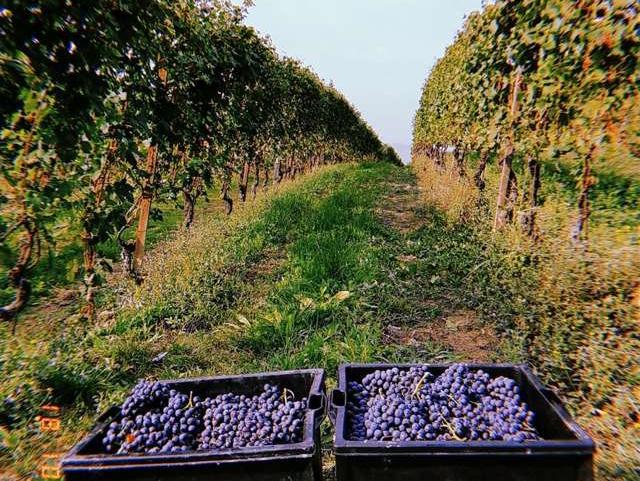Claudio Alario, from Diano d’alba, is defined a little everywhere as an “emergent” producer in the vast world of Piedmontese and Italian wine in general. I met him last year, by chance, during a wandering around the Langhe, discovering La Morra, Verduno, Serralunga and Diano d’alba. 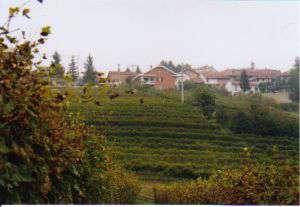 At lunch, at the restaurant, we matched the delicious Piedmontese dishes of the menu a Dolcetto di Diano d’alba chosen randomly from those in paper: We drank a dolcetto di Diano d’alba DOC 2000 called Costa Fiore, which we liked a lot. The producer was such a Claudio alario, and at this point why not go to see him in the cellar and buy a couple of bottles? Not easy to find, but the basement. In the end we landed and Claudio Alario, with his hands coloured by the Dolcetto who was working in the cellar, kept us company for an hour and left to lose his job. It was a very pleasant conversation, the man is very at hand and we talk together willingly also because he is very willing to share much of his knowledge. Thus, gratified by the attention granted to us and by some other taste, remarkable his Nebbiolo d’alba DOC, we went with a few more bottles of the two that we had budgeted.
At lunch, at the restaurant, we matched the delicious Piedmontese dishes of the menu a Dolcetto di Diano d’alba chosen randomly from those in paper: We drank a dolcetto di Diano d’alba DOC 2000 called Costa Fiore, which we liked a lot. The producer was such a Claudio alario, and at this point why not go to see him in the cellar and buy a couple of bottles? Not easy to find, but the basement. In the end we landed and Claudio Alario, with his hands coloured by the Dolcetto who was working in the cellar, kept us company for an hour and left to lose his job. It was a very pleasant conversation, the man is very at hand and we talk together willingly also because he is very willing to share much of his knowledge. Thus, gratified by the attention granted to us and by some other taste, remarkable his Nebbiolo d’alba DOC, we went with a few more bottles of the two that we had budgeted.
For those who write about wine participate in a harvest is definitely a mandatory step. To understand, see, and try. But also to tell. Thus, remembering the availability of the character, I made the proposal: participate in the grape harvest of Nebbiolo, and that Nebbiolo, that of its Barolo Riva, where Riva is the name of the vineyard located at the foot of the village of Verduno. Claudio Alario accepted Well, we were in early September: At that point it was just waiting for his call, not before October.
At the end of September, as we were in the area, we went to see him to make arrangements. Despite having worked all day, it was a Sunday, he immediately took us to take a tour of his vineyards on board a medium that hardly a Milanese could think as suitable to turn among vines even at a steep slope: a Y10.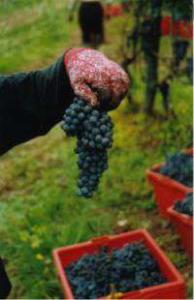 And so he took us to Costa Fiore, where he has a vineyard at Dolcetto, and in Serralunga, at his new vineyard of Nebbiolo da Barolo where he had recently planted the Barbatelle. Also this time, in addition to the thousand jumps and maneuvers seemingly impossible, kept us company for more than an hour telling us about everything and more. Above all he told us that for the vintage that had been he was really happy: all the work done during the whole season was giving the desired results, despite the crazy weather. “This is the year in which you see who worked well” he told me with a bit of pride, pointing out that the grapes were really good, beautiful healthy. And then he told me that he was invited as an exhibitor at a demonstration in Merano in November. “But it’s the winefestival”, not bad though, they don’t all go. We left with the agreement that we would be resentful within ten days.
And so he took us to Costa Fiore, where he has a vineyard at Dolcetto, and in Serralunga, at his new vineyard of Nebbiolo da Barolo where he had recently planted the Barbatelle. Also this time, in addition to the thousand jumps and maneuvers seemingly impossible, kept us company for more than an hour telling us about everything and more. Above all he told us that for the vintage that had been he was really happy: all the work done during the whole season was giving the desired results, despite the crazy weather. “This is the year in which you see who worked well” he told me with a bit of pride, pointing out that the grapes were really good, beautiful healthy. And then he told me that he was invited as an exhibitor at a demonstration in Merano in November. “But it’s the winefestival”, not bad though, they don’t all go. We left with the agreement that we would be resentful within ten days.
And when everything was almost ready, here’s the rain. Two rainy days that meant late harvest. Heard by phone was really quiet. “Almost everyone has already harvested”, he said to me, “they have taken fright, but I am quiet.” Gosh, I thought, either he’s a madman or the risk is calculated. Four days without rain and the grapes were ready. Weather not beautiful, but no risk of rain, and away, after buying a pair of rubber boots. The wait for the harvest made me think how life in the country is far from that of city: in Milan when it rains I open the umbrella but work the same and gain anyway, in the countryside you live to the rhythm of nature, sun and rain are normally alternated with the risk But to see a year of work ruined, even economically, if it decides to rain one more day. Besides, fruit and vegetables are not born in a box!
Claudio Alario, very kind from par suo, also provides accommodation in Diano d’alba at Locanda’d Batista, “not a six Star” tells me by phone. My wife and I arrived, who is not afraid in front of the mud and fatigue, in Diano d’alba we take vision of the room and we go to find alario that has harvested Barbera all day. He salutes warmly, his mother is with him.
“I just finished pressing the Barbera” says I. And it shows. The cellar looks like a battlefield. It is also very satisfied “the grape was beautiful and healthy” and we give an appointment for the next day. The convocation is scheduled for seven o’clock. Gosh, when we met the previous time we talked about the eight, murderer! But I do not want to be a figure of the city master and accept without question. A harvest requires a lot of energy: and my wife and I build them by making a great dinner at the inn, excellent dishes at a very economical price, which for those who live in Milan is always a pleasant surprise.
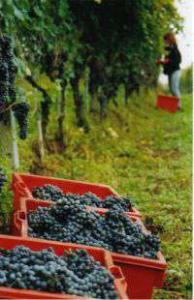 The alarm sounds at six and ten o’clock, you also have to have breakfast. Unfortunately for the inn is a day of rest, but no one would have risen at six and a half to prepare our breakfast. The only bar open in the area is in Gallo di Grinzane Cavour, but we have time to introduce ourselves from Alario to seven o’clock. Her mom, 75 years old, offers us a cup of coffee and shows us the tajarin that she prepared the day before for lunch today. It starts at seven and a quarter, it is still pitch dark, the rest day is cloudy. Alario in front with the tractor and trailer, we back in the car at twenty per hour, direction Verduno, it takes twenty minutes.
The alarm sounds at six and ten o’clock, you also have to have breakfast. Unfortunately for the inn is a day of rest, but no one would have risen at six and a half to prepare our breakfast. The only bar open in the area is in Gallo di Grinzane Cavour, but we have time to introduce ourselves from Alario to seven o’clock. Her mom, 75 years old, offers us a cup of coffee and shows us the tajarin that she prepared the day before for lunch today. It starts at seven and a quarter, it is still pitch dark, the rest day is cloudy. Alario in front with the tractor and trailer, we back in the car at twenty per hour, direction Verduno, it takes twenty minutes.
The vineyard is not particularly beautiful to see: It is a vineyard whatever, rather steep, but the bunches are not any grapes. Here we do the Barolo, and that of Alario is good, not powerful, he calls it “feminine”, but very pleasant and already almost ready when it does come out on the market. He is part of the group of “innovators”: barriques, short macerations, frequent pumping-overs. It will not be tradition but it works.
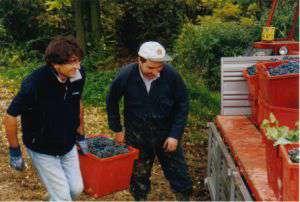 Returning to the vineyard, the first work to do is to unload empty baskets and put them at the beginning of each row. Already this operation is not simple because the baskets are stacked and stuck between them, it takes strength and a bit ‘ of cunning, but if it comes to the head. Then the Pelaverga hunt begins. Yes, we are in Verduno, in an old vineyard, and there is not only Nebbiolo, and not only Pelaverga, but also Barbera. The plants of pelaverga are to be searched with care, the cluster is purplish and it is recognized quite easily after a few minutes of patient training. of Pelaverga Alario makes a few hundred bottles, with good results. Another thing to learn is to recognize the good mold from the bad, and even here it takes training. It is peculiar that, with my optics as a citizen accustomed to the perfect fruit, I would have thought of discarding almost all the bunches or part of them. In fact a lot of grapes are in over-saturation, but they are things that you have to see to understand them. The bunches are dry. The Nebbiolo is covered in Pruina, so far I had read it only in books and seen in photography. The hunt for the Pelaverga, however, makes us move up and down the vineyard, which is three days in all but divided into two different plots: the day is a unit of measure Piedmontese that corresponds to about 3800 square meters, so named because it represents the Workable surface on a day from a plough pulled by a pair of oxen. His sub-hundredfold is the table.
Returning to the vineyard, the first work to do is to unload empty baskets and put them at the beginning of each row. Already this operation is not simple because the baskets are stacked and stuck between them, it takes strength and a bit ‘ of cunning, but if it comes to the head. Then the Pelaverga hunt begins. Yes, we are in Verduno, in an old vineyard, and there is not only Nebbiolo, and not only Pelaverga, but also Barbera. The plants of pelaverga are to be searched with care, the cluster is purplish and it is recognized quite easily after a few minutes of patient training. of Pelaverga Alario makes a few hundred bottles, with good results. Another thing to learn is to recognize the good mold from the bad, and even here it takes training. It is peculiar that, with my optics as a citizen accustomed to the perfect fruit, I would have thought of discarding almost all the bunches or part of them. In fact a lot of grapes are in over-saturation, but they are things that you have to see to understand them. The bunches are dry. The Nebbiolo is covered in Pruina, so far I had read it only in books and seen in photography. The hunt for the Pelaverga, however, makes us move up and down the vineyard, which is three days in all but divided into two different plots: the day is a unit of measure Piedmontese that corresponds to about 3800 square meters, so named because it represents the Workable surface on a day from a plough pulled by a pair of oxen. His sub-hundredfold is the table.
It is a vineyard for rent, that Alario intends to redo when the other vineyard in Serralunga will begin to produce: having all these grapes together obliges him to a management too complicated. Suddenly the vineyard is populated by people. They are the friends and relatives of Alario, including his wife, Uncle eighty four year old, brother-in-law and sister. Now that the Pelaverga has been removed you just have to be careful of the Barbera, but it is planted in very precise rows. At this point it is an easy job, and below with the Nebbiolo. The baskets are filled quickly and it is already time to fill the body of the tractor, not before having finished arranging the baskets to start spinning even in the lower vineyard, an operation that shows us all the expertise of Claudio Alario in the conduction of tractor and Trailer: what numbers. He tells us that every year someone leaves us pens, you have to be very careful.
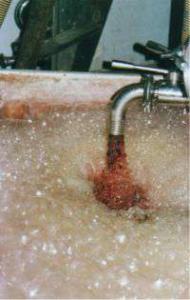 Thus loaded the baskets, from the capacity of about thirty pounds of grapes, alario heads to the cellar for the crushing. We stay for the harvest, which continues busily, the purpose is to finish the operations for lunch. And even the last bunch was severed. After the baskets have been loaded on the tractor, which in the meantime has gone back, the harvest will come to an end. Now Alario is really quieter, even the last grape harvester takes the way of the cellar. Now we are waiting for the celebration lunch: All those who have worked sit at the same table, the menu is rich, the tajarin seasoned with delicious tomato and sausage, we speak dialect mainly, sometimes someone translates, but the habit to dialect has Often the best. We talk about dogs from truffles: Alario’s brother-in-law is a truffle seeker, and Alario playfully reproaches him for not having brought them, provoking the obvious reaction: “And where is Barolo here?” he exclaims. The atmosphere is cheerful, the Barolo arrives, it is really good even if the conversation often escapes: it is the post-harvest that I have always imagined.
Thus loaded the baskets, from the capacity of about thirty pounds of grapes, alario heads to the cellar for the crushing. We stay for the harvest, which continues busily, the purpose is to finish the operations for lunch. And even the last bunch was severed. After the baskets have been loaded on the tractor, which in the meantime has gone back, the harvest will come to an end. Now Alario is really quieter, even the last grape harvester takes the way of the cellar. Now we are waiting for the celebration lunch: All those who have worked sit at the same table, the menu is rich, the tajarin seasoned with delicious tomato and sausage, we speak dialect mainly, sometimes someone translates, but the habit to dialect has Often the best. We talk about dogs from truffles: Alario’s brother-in-law is a truffle seeker, and Alario playfully reproaches him for not having brought them, provoking the obvious reaction: “And where is Barolo here?” he exclaims. The atmosphere is cheerful, the Barolo arrives, it is really good even if the conversation often escapes: it is the post-harvest that I have always imagined.
But it is not finished yet: the second load of grapes to be pressed is left. First Pelaverga, then Barbera, and finally Nebbiolo are pressed. I assist the priming of the fermentation of Barbera: The selected yeasts are reactivated in lukewarm water and mixed with nitrogenated substances, the nourishment that will help them not to cause fermentative stops “an exceptional product” says Alario. The whole is added to the crushed, with a very nice replacement action to see: The faucet of the steel tank is opened and the content poured into a tank, which at the same time is put into the tank from the top by means of a pump. The color variations of the tap coming out of the faucet are fascinating: it passes from red, to Violet, to a color similar to black when the skins come out together with the liquid part. Winemaking includes four daily pumping-overs and temperature-controlled fermentations between 28 and 30 degrees.
In the end the Sun also comes out. It would have been a great harvest with the sun, but we don’t complain, basically it did not rain. We go back to Milan, we saw the birth of the Barolo Riva 2002, maybe it will get great accolades, and my wife and I can say “we were there”. Not a little stuff.
Riccardo Modesti
May 6 2003
